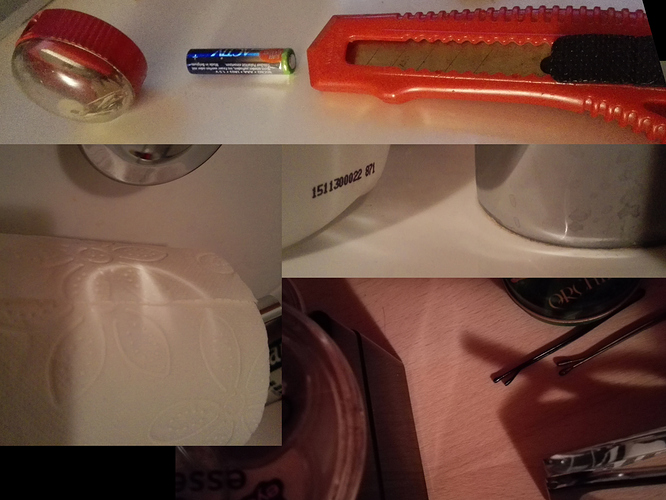Dude, you need to cool down a bit, writing random words CAPITALIZED and underlined doesn’t make your post more credible.
You kid right ? A BSDF/BxDF IS a mathematical INTERPRETATION of an ATOMIC surface! Its not an photon transverse an atomic grid, at all. So it IS an INTERPRETATION of nature that we solve with an ABSTRACT RAY PATH. It has NOTHING to do with reality. The simple fact that you have a GGX vs AS vs BM that totally differ in interoperability is fully interpretive at all. A BxDF shader is IDEALLY what you say, but there is not ONE implementation till today (show me one!) that from the render core to the shader to the rays has FULL energy exhaustion! Not even Maxwell! Because even Maxwell is NOT full spectral, it has “only” 12 wavelenghts. If we really want to be purists how things are!
You’re mixing up a lot of things here: A BSDF is a function that describes the amount of reflected light from one direction to another one. That’s all it is, nothing going on with atomic surfaces there. It can be either a mathematical function that’s designed to approximate a certain physical surface (such as Lambert diffuse, GGX etc.) or the measured BSDF of a real material (not supported in Cycles, though).
I have no idea what you mean with “FULL energy exhaustion” - in case you mean energy conservation, well, I can indeed show you a few: Lambert diffuse is 100% energy conserving, the new multiscattering GGX BSDF is as well.
The next thing you mention is spectral rendering: Yes, that would indeed be useful and, as far as I know, add way more realism than some caustics hack. However, for production, it’s pretty useless since almost no input data (textures etc.) is available in spectral form.
LOL, the rendering equation, really ? The rendering equation is only a framework of MATHEMATICAL reference, and well you said it, nobody has an INFINITE amount of time. This is WHY it makes the difference. duh!
And regarding finite calculation, well, improbability does not equal unimportance (maybe to you). Tell that to a scientists, jewelry maker, architect, and so on… that uses MLT, etc… For them they are VERY probable paths.
But the biggest thing that you miss is that now the big companies ARE switching to full ray transport from Disney to Weta, read my earlier post, and in the longer term, EVERYBODY will once its affordable or a cycles-wonder happens!
Its faster to setup right, its totally clear, pristine! VR, Lightfield rendering, spectral HDR + rec.2020, 3D and many others will not stay with PT, it is simply not enough.
That doesn’t make any sense either. The rendering equation describes light transport between surfaces in a geometric optics setting, if you want volumes as well, it can easily be extended with a radiative transfer model. Note that the rendering equation describes every optical phenomenon in geometric optics - yes, it describes caustics, spectral rendering, stereoscopic rendering (I guess that’s what you mean with 3D), any colorspace you could ever want, every dynamic range you could ever want, every VR model, lightfields, everything!!
Of course, not every renderer actually implements all of that - but the rendering equation itself does describe “full ray transport”.
By the way, what do you mean with “full ray transport”? Path tracing is an unbiased estimator of the rendering equation, it already can simulate everything (in theory - in practise, some effects might require millions of samples). The goal of more advanced light transport algorithms is to solve it faster and with lower amounts of samples, not so solve it more correctly.
FOR NOW! (although its changing ALREADY!) and only for the entertainment industry BTW! But it will not stay that way and neither should we, or the quality. If you don’t understand that, you ignore the truth: The world is moving forward and simple PT is getting replaced everywhere, sooner or later.
The industry is still busy switching towards path tracing, not away from it. Of course it will be replaced one day, but there currently is no better all-round algorithm for production rendering. Just look at all the new renderers being developed: Hyperion - PT only. Glimpe - PT only. Arnold (not new, but industry standard) - PT only.
Generally - don’t just throw random buzzword around. Of course, every article will make their own renderer sound 20+ years ahead of the competition, but if you look behind the marketing phrases, Cycles is actually still quite competitive in terms of algorithms.

 The requirement for that are maybe insane, and we will have this only in the year 2100, but i want to show how the whole stuff is different from our actual pity technology… lol
The requirement for that are maybe insane, and we will have this only in the year 2100, but i want to show how the whole stuff is different from our actual pity technology… lol